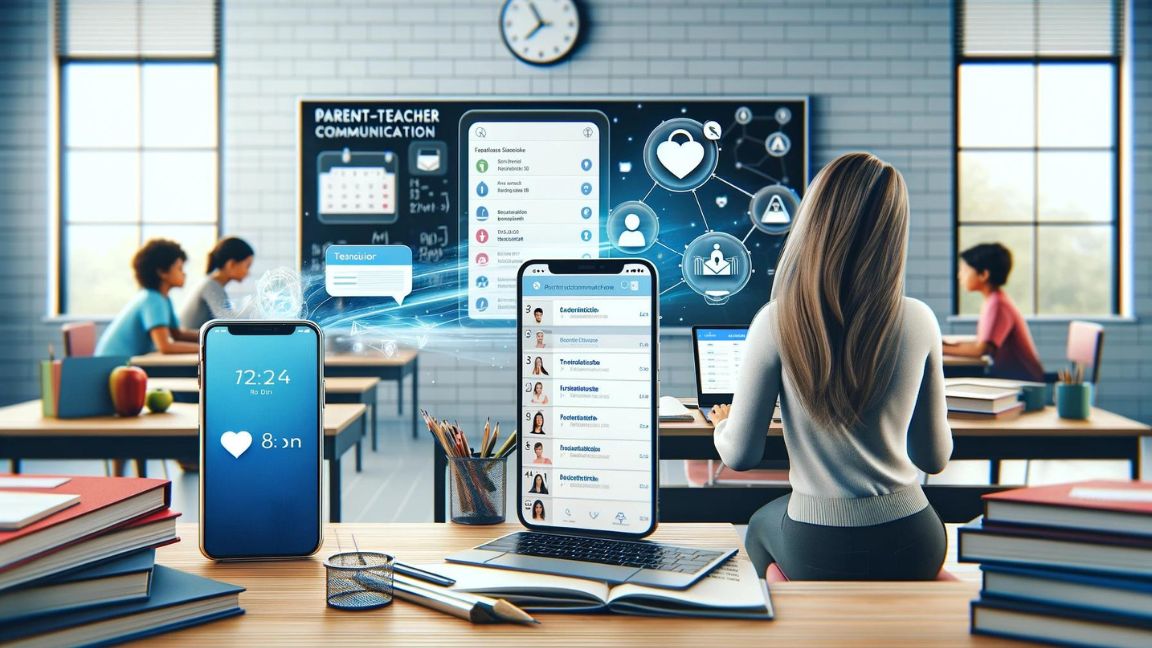In today’s educational landscape, effective communication between schools and parents plays a crucial role in student success. With the advent of technology, schools are leveraging various tools and platforms to streamline communication and foster collaboration between educators and parents. This article explores the best practices for improving school-parent communication and highlights the role of technology solutions such as school ERP systems and parent apps in achieving this goal.
Importance of School-Parent Communication
Effective communication between schools and parents is essential for several reasons:
Academic Progress: Regular communication allows parents to stay informed about their child’s academic progress, including grades, attendance, and behavior.
Engagement: Engaged parents are more likely to participate in their child’s education, attend school events, and support learning at home.
Support: Communication provides an avenue for parents to seek support from teachers and administrators regarding their child’s academic or behavioral challenges.
Partnership: Building a strong partnership between schools and parents creates a collaborative environment focused on the success of each student.
Best Practices for School-Parent Communication
Clear Channels of Communication: Establish clear channels for communication, including email, phone, messaging apps, and face-to-face meetings, to accommodate parents’ preferences.
Timely Updates: Provide timely updates on important events, school policies, and student progress to keep parents informed and engaged.
Personalized Communication: Tailor communication to individual students and families, addressing their specific needs and concerns.
Two-Way Communication: Encourage two-way communication by soliciting feedback from parents, responding promptly to inquiries, and involving them in decision-making processes.
Transparency: Maintain transparency regarding academic expectations, grading criteria, and disciplinary procedures to build trust with parents.
Role of Technology Solutions
School ERP Systems: School ERP systems centralize administrative tasks such as attendance tracking, grade management, and communication. These systems provide a comprehensive platform for managing school operations and facilitating communication between teachers, parents, and administrators.
Parent Apps: Parent apps offer a convenient way for parents to access school-related information, receive updates, communicate with teachers, and track their child’s academic progress. These apps often integrate with school ERP systems, providing real-time access to important data and notifications.
Case Study: Helloparent School ERP Software
Helloparent is a leading school ERP solutions that specializes in enhancing school-parent communication and collaboration. With its user-friendly interface and robust features, Helloparent streamlines administrative tasks, improves transparency, and fosters engagement between schools and parents.
Key Features of Helloparent:
Real-Time Updates: Parents receive real-time updates on their child’s attendance, grades, and school activities via the Helloparent app.
Communication Tools: Helloparent facilitates seamless communication between teachers and parents through instant messaging, announcements, and event notifications.
Academic Insights: Parents gain insights into their child’s academic performance, including exam results, homework assignments, and behavioral reports.
Event Management: Helloparent enables schools to create and manage events, such as parent-teacher meetings and extracurricular activities, with ease.
Secure Access: Helloparent prioritizes data security, ensuring that sensitive information is protected and accessible only to authorized users.
Conclusion
Effective school-parent communication app is essential for student success and overall school improvement. By implementing best practices and leveraging technology solutions such as school ERP systems and parent apps, schools can strengthen their communication channels, build partnerships with parents, and create a supportive learning environment for all stakeholders.
Incorporate Helloparent school ERP software into your school’s communication strategy and experience the difference in parent engagement and satisfaction.
Frequently Asked Questions
Communication with parents is crucial in schools as it fosters collaboration between educators and families, enhances student learning outcomes, ensures a supportive home-school connection, promotes parental involvement in a child’s education, and helps address any concerns or issues effectively.
Parent interaction in school refers to the ongoing engagement and communication between parents or guardians and school staff, including teachers, administrators, and counselors. It involves sharing information, discussing student progress, addressing concerns, and collaborating to support student learning and development.
Communicating with parents strengthens the home-school partnership, promotes parental involvement, builds trust and rapport, enhances student motivation and academic success, fosters a supportive learning environment, facilitates early identification and resolution of issues, and promotes a shared understanding of educational goals and expectations.
Communication between parents and teachers involves exchanging information, sharing updates on student progress, discussing academic performance, behavior, and social-emotional development, addressing concerns or questions, and collaborating to support the child’s overall well-being and success in school.
Communication with parents is vital in childcare settings as it allows caregivers to share important information about a child’s daily activities, routines, and development, provides reassurance to parents about their child’s well-being, fosters trust and transparency, enables collaboration on caregiving practices, and supports continuity of care between home and childcare environments.

